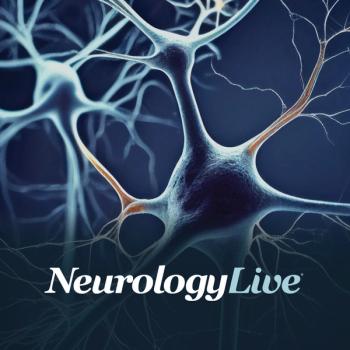
Biomarker Research Required to Further Advance Alzheimer Drug Discovery
Novel biomarkers are being explored to help expedite the development of new treatments for Alzheimer disease.
Rosa Canet-Aviles, PhD
The many setbacks faced by research into new therapies for patients with Alzheimer disease has shifted the focus toward biomarkers, with the goal of discovering novel markers that help expedite the development of new treatments, according to Rosa Canet-Aviles, PhD, during a keynote address at the 19th International Conference on Alzheimer's Drug Discovery.
"High quality biomarkers can markedly accelerate and enable drug development in areas of unmet need," Canet-Aviles, scientific program manager, Foundation for the National Institutes of Health (FNIH), said at the conference, which was organized by the Alzheimer's Drug Discovery Foundation. "As of now, too many drugs that go through the whole development process fail. To really improve the success rate, we need a whole new generation of biomarkers that enables developers to know if a drug might fail or have toxicity earlier in the process."
Several types of biomarkers exist, with 2 main classifications: those that measure disease presence or status and those for aspects of response to treatment. The disease-focused biomarkers can be used for monitoring, to gauge susceptibility/risk, or can provide diagnostic or prognostic information. Treatment-based markers can be broken down to those that can be used for predictive value, pharmacodynamics or response measurement, and safety.
The discovery of biomarkers should be integrated into drug development through the investigational new drug (IND) pathway, scientific community consensus, and biomarker qualification programs, said Canet-Aviles. Developing these markers is challenging at a single institution, warranting a consortium approach for biomarker development, which is an FDA-supported strategy.
"Clinical trials with a biomarker are nearly twice as likely to succeed," Canet-Aviles said. "Consortia efforts are necessary for the development of biomarkers, particularly the ones that are going to be used across a disease area or a class of drugs."
To this end, the FNIH, a non-governmental, not-for-profit organization, has developed a Biomarkers Consortium, with key players from government (FDA, NIH, CMS), not-for-profit organizations, and pharmaceutical or nutrition companies. The goal of the consortium is to help drive consensus among multiple stakeholders with broad areas of expertise and interest.
In the neuroscience space, the consortium has completed 4 projects, with another 3 active and 3 in development. The completed projects, all focused on Alzheimer disease, ranged from multiplex proteomic studies identifying plasma- or CFS-based biomarkers to measurements of neuroinflammation. One study in development is looking to clinically validate an amyloid-beta (Abeta) plasma assay for Alzheimer disease.
"There is a sweet spot in terms of funding [for these projects]. It's usually a 2 year project for half a million dollars, but lately we've been able to develop projects that get a little more funding. It depends on the interest," she said. "Biomarkers are becoming more important and the companies are starting to invest more in them."
Since its inception in 1990, the FNIH has gleaned several key takeaway lessons for setting up an effective project development system for biomarker development, Canet-Aviles said. Importantly, multiple aims and steps with clear "go or no go" decisions are required, based on deliverables. Additionally, Canet-Aviles noted that at least 3 private partners should be involved in the project from the beginning, to ensure a mix of ideas, viewpoints, and funding.
"This helps ensure that this is a true consortia effort, since there are 3 parties involved," she said. "If we don't have at least 3 private partners from the inception of the project, there's very little likelihood that the project will succeed and that we'll be able to fund the project."
After these initial items, she defined several other key factors for launching a successful consortium, including budget and funding feasibility scans during the development process along with setting timelines that work for all stakeholders. In an example of setting timelines, Canet-Aviles noted, that projects have gone from a 3-year estimate to 2 years to meet key milestones for a private partner, such as the initiation of a clinical trial. "We are now going much faster but it is helping pharma be more responsive," she said.
Other key items include increased transparency and communication, conflicts of use definition early in the process, and the early involvement of regulatory scientists, to increase the likelihood of IND acceptance. Other research activity from other groups should be also analyzed, to avoid duplication of efforts.
"Transparency on the project outcomes, even on negative results, should be published and disseminated in the field. This is very important," Canet-Aviles said. "We need to ensure that other similar efforts are not being pursued, and if they are, that we have a synergistic approach."
Other projects currently in development at The Biomarker Consortium focus on multicomponent biomarker plasma validated across neurodegenerative disorders and imaging biomarkers for glioma. The number of projects has been increasing, as the focus on biomarkers has increased. Canet-Aviles is hopeful that a breakthrough will be made soon.
Canet-Aviles R, et al. FNIH Biomarker Initiatives in Neuroscience—Consortium Efforts in the Development of Biomarkers for Drug Development. Presented at: 19th International Conference on Alzheimer's Drug Discovery. September 17-18, 2018, Jersey City, NJ.
Newsletter
Keep your finger on the pulse of neurology—subscribe to NeurologyLive for expert interviews, new data, and breakthrough treatment updates.


































